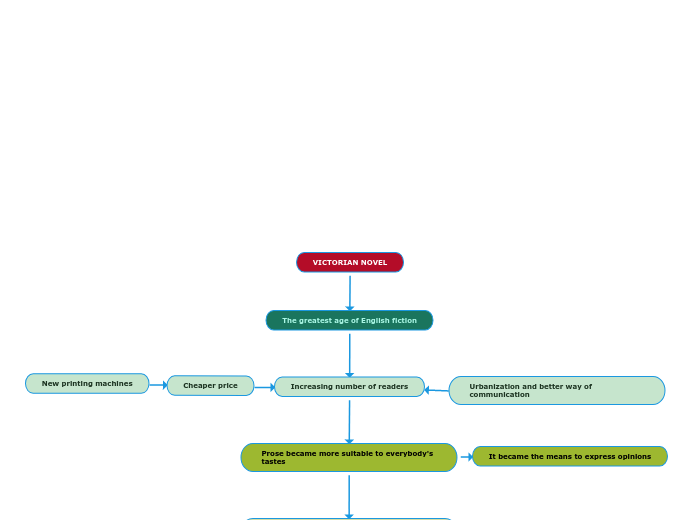Extra material
World Population Trends
OVERVIEW
It took hundreds of thousands of years for the world population to grow to 1 billion – then in just another 200 years or so, it grew sevenfold. In 2011, the global population reached the 7 billion mark, and today, it stands at about 7.6 billion.
This dramatic growth has been driven largely by increasing numbers of people surviving to reproductive age, and has been accompanied by major changes in fertility rates, increasing urbanization and accelerating migration. These trends will have far-reaching implications for generations to come.
UNFPA helps countries identify and understand such trends, which are critical to development. UNFPA is one of the world’s largest funders of population data collection. UNFPA also advises countries that the best way to ensure sustainable development is to deliver a world where every pregnancy is wanted, every birth is safe, and every young person's potential is fulfilled.
Population prospects
The UN has developed three population projections, called variants – one high, one low, and one in between. Of these, the medium variant suggests that the world population will grow to nearly 10 billion by the middle of this century, and will level off at around 11.2 billion by the end of it. However, if fertility declines by less than assumed, the world population could grow to about 16.5 billion by the end of the century. If fertility falls by more than assumed, the world population could slightly fall over current levels to about 7.3 billion.
The UN publishes its population projections every two years, and over the past decades, the medium variant of the projections has often been corrected upward, meaning the population has grown more quickly than expected. The most recent projections were released in July 2017.
Megatrends
The recent past has seen enormous changes in fertility rates and life expectancy. In the early 1970s, women had on average 4.5 children each; by 2015, total fertility for the world had fallen to below 2.5 children per woman. Meanwhile, average global life spans have risen, from 64.6 years in the early 1990s to 70.8 years today.
In addition, the world is seeing high levels of urbanization and accelerating migration. 2007 was the first year in which more people lived in urban areas than in rural areas, and by 2050 about 66 per cent of the world population will be living in cities.
These megatrends have far-reaching implications. They affect economic development, employment, income distribution, poverty and social protections. They also affect efforts to ensure universal access to health care, education, housing, sanitation, water, food and energy. To more sustainably address the needs of individuals, policymakers must understand how many people are living on the planet, where they are, how old they are, and how many people will come after them.
Why is the population growing so quickly?
The huge growth in the world population over the past two centuries is largely the result of advances in modern medicines and improvements in living standards. These have significantly reduced infant, child and maternal mortality, contributing to an increase in life expectancy. Although fertility levels have declined, they have not fallen at the same pace as mortality levels.
The world population will continue to grow for decades to come. This is the result of ‘population momentum’: Because of improved survival rates and past high fertility levels, there are more women of reproductive age today. This will contribute to a relatively large number of births, even if those women have fewer children on average. Although population growth is, today, largely attributable to population momentum, after 2060 it will almost exclusively be driven by fertility levels in the world’s least developed countries.
A varied landscape
General population trends mask considerable differences between countries. On the one side stand the world’s least developed countries, which continue to have high fertility levels. The population of the world’s least developed countries is projected to double by 2053, and in some countries it will even triple. On the other side are high-income and rising-income countries, which are experiencing slow population growth or no population growth at all. Whereas the former continue to have large, growing, populations of young people, the latter have large, growing populations of older persons. (There are also some countries experiencing a decline in population size, which causes including under-replacement-level fertility, emigration and high mortality).
While demographics vary considerably at national levels, the overall trends have global implications for sustainable development. The global climate will change no matter where greenhouse gases are emitted, for example. Efforts to sustainably meet the needs and desires of a growing world population will have implications for all countries – as will failure to meet these needs.
While surges in population will bring challenges, they also represent humanity's success. The move from higher to lower mortality and fertility reflects achievements in health, education and human rights. Falling fertility levels also create opportunities for countries to realize a demographic dividend – the economic growth that can occur when there is an increase in the number of people of working age and a decrease in the number of dependents.
Human rights
Population dynamics can be shaped by policies. But these policies must strengthen, rather than weaken, fundamental human rights and freedoms. Population dynamics are the cumulative result of individual choices and opportunities, and they are best addressed by enlarging these choices and opportunities – especially those related to sexual and reproductive health and rights. When couples can freely decide the number, timing and spacing of their children, evidence shows more children survive and thrive, and overall fertility levels trend downward.
Sexual and reproductive health and rights also make an enormous difference in the health and lives of all people, especially women, by dramatically reducing maternal and infant mortality rates, helping to prevent the spread of communicable diseases such as HIV, and empowering women to live more self-determined lives.
What UNFPA is doing?
UNFPA is one of the world’s largest supporters of population data collection. In addition to supporting censuses and surveys, UNFPA works with policymakers, civil society, health-care providers and educators at all levels to promote sexual and reproductive health and rights – including voluntary family planning.
Population dynamics and policies
Population trends and dynamics play a powerful role in development, and must therefore be factored into planning and policy decisions. Population size and structure impact a country’s economy as well as its ability to provide social protections and access to health care, education, housing, sanitation, water, food and energy. Because population dynamics vary widely – from countries trying to provide opportunities for enormous youth populations to those coping with low fertility and ageing – policies dealing with population issues must be tailored to their specific needs.
However, it is essential that these policies be grounded in a fundamental respect for human rights. Population dynamics are the cumulative result of individual choices and opportunities – and UNFPA has learned that real progress results when these choices and opportunities are enlarged rather than restricted.
“It is essential that these policies be grounded in a fundamental respect for human rights.”
This is especially true when dealing with the protection of the sexual and reproductive health and rights of all people, a sensitive area, and one with enormous implications for population dynamics. The International Conference on Population and Development, the Millennium Development Goals, and the upcoming post-2015 development agenda all call for unrestricted and universal access to sexual and reproductive health care, including voluntary family planning. Because women and girls bear children, sexual and reproductive health is also an integral element of gender equality, which is a proven driver of economic and social progress.
International agreements also call for higher investment in education beyond the primary level, with special consideration for the women and girls who are often left behind.
Together, these measures will improve the lives of all people, helping to reduce infant, child and maternal mortality, reducing unwanted and adolescent pregnancies, and curbing the spread of diseases including HIV. At the same time, these human rights-based policies will help countries address the range of their demographic concerns. For example, in countries with high fertility levels and an unmet need for contraception, universal access to sexual and reproductive health services can help women plan and space their pregnancies, with a cascade of positive impacts for individuals, communities and the country as a whole. Decreasing fertility, coupled with investments in young people, can help countries realize a ‘demographic dividend’, a driver of economic growth.
Similarly, human rights-based policies can assist countries grappling with large migration flows or rapid urbanization. Well-managed migration – internal or external – can have many benefits. Evidence suggests that efforts to limit urban population growth, for example by restricting internal migration, have had limited success, if any.
Data collection, analysis
Rights-based policies should be complemented by efforts to anticipate and plan for population changes. To this end, countries need to collect disaggregated population data on a regular basis and use this data for planning at the national, local, rural and urban levels.
Demographic data, together with data on environmental conditions, is essential to developing effective policies on housing, infrastructure, utilities and urban planning. Together with data on social and economic conditions and vulnerabilities, population data can inform investments in social services such as health care and education. Without such data, countries cannot hope to understand or meet the needs of their ever-changing populations.
Policies
Well-managed migration
Provide access to health care, education, housing, sanitation, water, food and energy
Higher investment in education beyond the primary level, with special consideration for the women and girls who are often left behind.
Unrestricted and universal access to sexual and reproductive health care, including voluntary family planning.
Provide social protections
Consequences
Economic development, employment, income distribution, poverty and social protections affected by these megatrends
These megatrends also affect efforts to ensure universal access to health care, education, housing, sanitation, water, food and energy
Basic Concepts
It took hundreds of thousands of years for the world population to grow to 1 billion – then in just another 200 years or so, it grew sevenfold. In 2011, the global population reached the 7 billion mark, and today it stands at about 7.6 billion
Factors
Accelerating migration
Increasing urbanization
Major changes in fertility rates
Increasing numbers of people surviving to reproductive age
Advances in modern medicines and improvements in living standards
Significant reduction in infant, child and maternal mortality, which contributes to an increase in life expectancy









